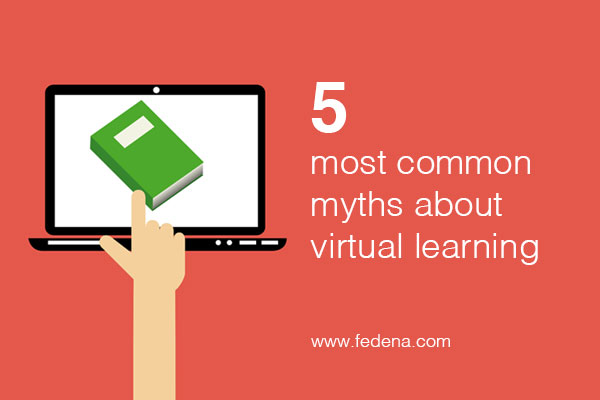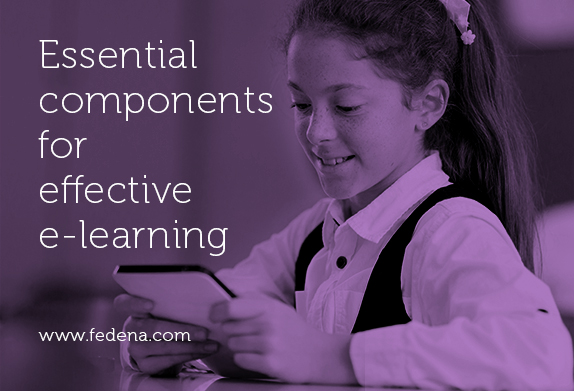
This month, millions of students will start new courses on campuses online. Some will take formal courses from traditional higher education institutions, and some will enroll in one of the hundreds of available MOOCs (there are more MOOCs starting this September than have been available in any previous month). For the most part, students won’t be doing both of the things at the same time—though a few colleges offer MOOCs for credit, not many students have chosen to take them.
But that doesn’t mean that MOOCs and traditional online education are two completely different beasts. In fact, online education can learn a lot from MOOCs, and in fact many online courses are already starting to implement ideas and practices derived from the research on MOOCs.
Here are a few examples of what online education can learn from MOOCs
Content delivery: Lectures and video
Online students have wanted video technology in their courses for years—in response to a 2010 Get Educated poll, 60% of respondents answered “video technology” to the question “Which technology would you like in online classes?” Despite that, many online courses have continued to rely mainly on text-based resources as substitutes for in-class lectures. Why? Perhaps because of a lack of production capabilities, limitations of learning management systems, or even instructors not realizing how valuable video can be in an online course. Or it could be a combination of all three. However, this is all changing because of MOOCs, in which video lectures and tutorials constitute the primary means of content delivery. Now, more online courses are using videos, produced either in-house or by a third-party vendor such as a textbook publisher.
Instructors interested in using video lectures in their courses would do well to consult the MOOC data on the types of videos that are most engaging for students. In particular, MOOC researchers have found that the ideal length of a video lecture is between 6 and 9 minutes, informal talking head–style videos are more engaging than PowerPoint slideshows or screencasts. Video lectures designed for online consumption are better than recorded live lectures, a fast speaking rate leads to higher engagement, which is in contrast to live lectures, in which pauses are often deliberately inserted, and students usually watch video lectures only once, but re-watch and jump around in video tutorials.These findings are just as applicable to preparing content for for-credit online courses as they are for massive open ones.
Assessments and activities: More is better
MOOCs in general have more activities and more assessments than are found in traditional in-person and online classes.Most MOOCs involve not only very short lectures, but also assessments within and between lectures. For example, in some MOOCs review questions are interspersed in the videos and every module segment ends with a short quiz. These assessments are not always graded, but they do serve to enhance student engagement and understanding, and this style is starting to be used more frequently in formal online education.
In addition, MOOCs have been innovative in supplying opportunities for students to exercise their problem-solving muscles. According to Columbia University’s Fiona Hollands, based on MOOC research instructors are incorporating more problem-solving activities into their traditional courses, which has resulted in improvements in student performance.
The value of instant feedback
Most MOOCs provide students with instant feedback on their activities and assessments. Automated grading systems are able to tell students immediately where they are going wrong and set them on the right track, not just for multiple choice questions, but also for things like coding and even (controversially) essays. EdX President Anant Agarwal sees this feedback as having “a huge value,” saying: “Students are telling us they learn much better with instant feedback.”
Agarwal’s words are proving more and more true as new data come available. Even in the controversial area of writing, there is evidence that instant machine-scoring feedback is beneficial. Since 2009, instructors at the New Jersey Institute of Technology have been using an automated essay grader, not as a final grading system, but as a sort of writing tutor. In doing this, they have found that students are much more willing to rewrite and revise their work in response to computer feedback than human feedback.
Instant feedback is nearly impossible in an on-campus course (at least one of any size), and it is not something that has typically been strived for in online courses either. However, with the improvements in machine grading systems, online instructors may soon be able to provide instant feedback as a matter of course.
MOOCs are not right for every course or every student, but they still have value, and that value is not limited to the classes themselves. MOOCs and the analytics that are being used in them have great potential to inform teachers about how students learn and what works best in classrooms, both online and off. Rather than dismissing or overlooking them, we should focus on what we can learn from them—a process that has only just begun.
The article is written by:
 Sameer Bhatia, founder & CEO of ProProfs, a leading provider of online learning tools for building, testing, and applying knowledge. ProProfs Knowledge Base Software is used to create highly-searchable online FAQ’s to improve customer service and reduce tickets. Sameer has a Master’s degree in Computer Science from the University of Southern California (USC) and is an ed-tech industry veteran. You can find him on Google+ and Twitter.
Sameer Bhatia, founder & CEO of ProProfs, a leading provider of online learning tools for building, testing, and applying knowledge. ProProfs Knowledge Base Software is used to create highly-searchable online FAQ’s to improve customer service and reduce tickets. Sameer has a Master’s degree in Computer Science from the University of Southern California (USC) and is an ed-tech industry veteran. You can find him on Google+ and Twitter.










 Sameer Bhatia, founder & CEO of
Sameer Bhatia, founder & CEO of 
